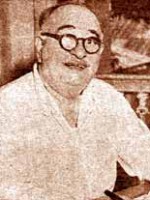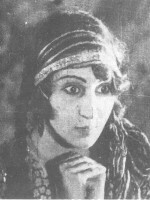Abdolhossein Sepanta est un Acteur, Réalisateur, Scénariste et Producteur Iranien né le 4 juin 1907 à Téhéran (Iran)
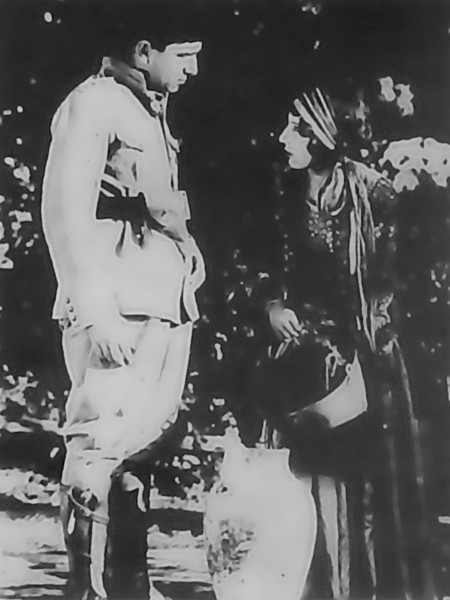
Abdolhossein Sepanta est un réalisateur iranien né le 4 juin 1907 à Téhéran et décédé le 28 mars 1969.
Il est connu comme le père du cinéma parlant iranien.
Abdolhossein Sepanta was born in the Vagonkhaneh Avenue area in Tehran in 1907. His father, Gholam Reza Khan was the translator of Mozzafar-al-Din Shah, a King of the Qajar dynasty.
Abdolhossein began his studies at the Saint Louis and Zoroastrian Colleges in Tehran circa 1925. He found a keen interest in ancient Persian history and literature. Therefore in 1927, he chose Sepanta as his surname. In 1927, he traveled to India via Bushehr. There, he became acquainted with Dinshah Irani as his Indian Translator, who was the director of the Persian Zoroastrian Society. After extensive studies in ancient culture, he returned to Iran for a short period.
Sepanta soon returned to India again with plans for a lengthier stay. He continued to study ancient Iranian culture and literature. Encouraged by his teachers and professors, Sepanta started his activity in cinema.
Lor Girl
As Sepanta took more interest in film, he found that there was a possibility one of his productions could make it to theaters in Iran through some competitive tactics. The leading Iranian films producer at the time was Oganes Oganians, a Russian Armenian immigrant who pioneered the industry in Iran. His silent films were a hit in Iran and were modeled after a series of Danish comedies aired in the previous years.
Looking at the advanced technology available in British India, Sepanta realized that he could bring to Iranian cinema the first talkie film. In 1931, with an acquaintance Ardeshir Irani, a parsi from the local community, Sepanta began production of the Lor Girl at the Imperial Film Co. in Bombay. The movie was the first film with people talking in it as well as one of the first productions in a Muslim country to cast a female. The movie was screened in October 1933 in Tehran at two major movie theaters, Mayak Cinema and Sepah Cinema, and was surprisingly a major hit. Contrary to the expectations of cinema managers, who relied on foreign films, The Lor Girl was an instantaneous success and set up a new record of sale and running period which was not beaten for several years.
Sepanta wrote the entire script and played the leading male role as well. The story is about Golnar, a village teahouse maid that falls in love with Jafar, a government agent. The two fall in love and escape to India until political tensions in troubled Iran die down. The movie is said to be a subtle political commentary on the lack of general public security during a period when the Pahlavi dynasty is replacing the Qajar dynasty in Iran.
The leader of early Iranian cinema
In the 1930s, there were nine talkie films produced from 1931-1937. Of these nine, five are Sepanta's films. He's considered by many to be the Leader of that era, when films were mainly political documentaries and films for entertainment were disliked by the ruling dynasty.
He was director, screenwriter, and many times, the lead role of his films. These were The Lor Girl (1931), Ferdowsi, Shirin-o-Farhaad, Black Eyes, and Leyli o Majnun (1936 film), which were produced in India.
Sepanta was a man of letters and a prominent scholar in pre-Islamic Persian literature, therefore his films were extremely national and historical, a trend which prevailed in other artistic and literary circles at the time and was the outcome of the suppressed but restless social and cultural situation in the society.
Concerning his motives in making A Lor Girl, Sepanta explains later:
“As it was the first Iranian sound film to be presented abroad I felt it should present a bright picture of Iran... I have to admit that the film was a great boost for the nationalistic pride of expatriate Iranians.”
It is to be noted, until 1933 and The Lor girl Iran’s cinema was not so popular and the few cinemas in Tehran and other major cities just served the aristocracy and some particular classes of the society. Moreover, Iranian filmmakers had no clear line of thought. With the exception of Sepanta, who used the elements of Iran’s ancient literature in his works, other filmmakers would mostly imitate foreign movies.
Sepanta's superior films raised the expectations of Iranian movie audiences. In 1934, he made his second film Ferdowsi at the millenary celebrations of the great Persian epic poet Ferdowsi.
Sepanta’s third film Shirin-o-Farhaad was based on a romantic story from Nizami dramatic poetry. The film was shot in India in four months and was screened towards the end of 1934. Sepanta directed his fourth film, The Black Eyes, and screened it in Tehran for four weeks. In 1936, Sepanta made his final commercial film, Laili-o-Majnoon.
Between 1930 and 1936 the Iranian film industry was shut down and it was Sepanta alone who continued his activities and produced his films and kept the market live and busy.
After Laili-o-Majnoon, Sepanta prepared for shooting another script with the working title of The Black Owl. However, the project never materialized, nor did another screenplay he had written on the life of Persian mathematician, astronomer and poet Omar Khayyám.
Conservatism and the Calcutta Iranians
Sepanta’s early films were filmed in Bombay with Parsis as organizers and cast of different backgrounds. For some reason, in 1935, Sepanta packed his things and left Bombay for Calcutta to seek out opportunities in the Bengali cinema. There, he met people from the Muslim Iranian expatriate community mainly from Khurasan. He soon met with Abed Basravi, a man from a moderately religious family that owned the Basravi Masjid in the city. The family had a history of artists, who took a keen interest in a film project. Within months, the shooting of the film began, with Basravi and his two sons, Sepanta, and numerous others from the Calcutta Iranian community as cast members.
This final film, Laili-o-Majnoon, was based on a full-scale dramatic poem by Nizami similar to that of Romeo and Juliet. The Basravi family made many peripherals that added to the script such as detailed information regarding exterior and interior scenes, dialogues, and actors’ movements, settings, costumes, lighting, sound effects and camera movements. They also contributed in making explanatory notes on editing and film processing made that are offered and scene descriptions by carefully worked-out drawings. Though the other 4 scripts are available, none of them show such detailed workmanship. Due to the changing political climate in Iran, Laili-o-Majnoon never saw any comparable market success.
Return to Iran
In 1935, he left Calcutta (Kolkata) for home, hoping that he could enlist government assistance to establish a film production studio in Iran. However, he failed to gain enough support for his projects from the new government.
Dr.Sassan Sepanta quoted his father in an interview:
“In September 1936, he arrived in Bushehr (a port beside of Persian Gulf) with a print of Laili-o-Majnoon. Due to bureaucratic complications, the film print could not be immediately released to screen, and he had to leave for Tehran without it. Government officials’ attitude was inexplicably hostile from the beginning and he almost was sorry that he returned home. The authorities did not value cinema as an art form or even as a means of mass communication, and he soon realized that he had to forget about his dream of establishing a film studio in Iran. He even had difficulty getting permission to screen his film, and in the end the movie theater owners forced him to turn over the film to them almost for nothing.”
Sepanta who had been disappointed, sold his Laili-o-Majnoon at a very cheap price to cinema
owners in Tehran, he was about to return to India for the last time to shoot The Black Owl and Omar Khayyám, when he was retained in Esfahan by his mother's illness. He never to India again.
Sepanta after filmmaking
Between 1934 to 1954, not a single film was produced in Iran and when filmmaking activity was resumed,
Sepanta was living in seclusion in Esfahan.
In 1943 he started publishing his weekly magazine(Sepanta Newspaper). He had difficulty to continuing publishing his magazine because of his ideology and political thought, which holds liberty as the primary political value and seeking a society characterized by freedom of thought on the authority of government. Therefore he has been forced to close his magazine in 1954. From 1955 he was the Iranian consultant of the United States Aid Program in Esfahan.
Finally after 30 years Sepanta took up filmmaking again but not as a professional. He bought an 8 mm Canon camera and made a number of short documentary films between 1967 and 1969. The Autumn, one of his 8 mm films, was presented 2 years after his death at the 26th session of the Free Cinema Workshop in 1971 in Iran.
Throughout his life he wrote and translated eighteen books including:
Ethical philosophy of the Ancient Iran,
Who was Zoroaster and what He did,
The elementary Mazdyasna, Rays of Philosophy in Ancient Iran,
Selected Poems from Dehqan Samani and Mirza Abolvahab Golshan Iranpour,
The collected poems of Sepanta, and The poems of the Pahlavi Period.
Abdolhussein Sepanta has played a fundamental role in the formation and growth of the Iranian movies, who has been known as the father of Iranian sound films in Iran.
Sepanta died in Esfahan of a heart attack on 28 March 1969.
Source : Wikidata
Abdolhossein Sepanta

- Infos
- Photos
- Meilleurs films
- Famille
- Personnages
- Récompenses
Il est connu comme le père du cinéma parlant iranien.
Biographie
Early yearsAbdolhossein Sepanta was born in the Vagonkhaneh Avenue area in Tehran in 1907. His father, Gholam Reza Khan was the translator of Mozzafar-al-Din Shah, a King of the Qajar dynasty.
Abdolhossein began his studies at the Saint Louis and Zoroastrian Colleges in Tehran circa 1925. He found a keen interest in ancient Persian history and literature. Therefore in 1927, he chose Sepanta as his surname. In 1927, he traveled to India via Bushehr. There, he became acquainted with Dinshah Irani as his Indian Translator, who was the director of the Persian Zoroastrian Society. After extensive studies in ancient culture, he returned to Iran for a short period.
Sepanta soon returned to India again with plans for a lengthier stay. He continued to study ancient Iranian culture and literature. Encouraged by his teachers and professors, Sepanta started his activity in cinema.
Lor Girl
As Sepanta took more interest in film, he found that there was a possibility one of his productions could make it to theaters in Iran through some competitive tactics. The leading Iranian films producer at the time was Oganes Oganians, a Russian Armenian immigrant who pioneered the industry in Iran. His silent films were a hit in Iran and were modeled after a series of Danish comedies aired in the previous years.
Looking at the advanced technology available in British India, Sepanta realized that he could bring to Iranian cinema the first talkie film. In 1931, with an acquaintance Ardeshir Irani, a parsi from the local community, Sepanta began production of the Lor Girl at the Imperial Film Co. in Bombay. The movie was the first film with people talking in it as well as one of the first productions in a Muslim country to cast a female. The movie was screened in October 1933 in Tehran at two major movie theaters, Mayak Cinema and Sepah Cinema, and was surprisingly a major hit. Contrary to the expectations of cinema managers, who relied on foreign films, The Lor Girl was an instantaneous success and set up a new record of sale and running period which was not beaten for several years.
Sepanta wrote the entire script and played the leading male role as well. The story is about Golnar, a village teahouse maid that falls in love with Jafar, a government agent. The two fall in love and escape to India until political tensions in troubled Iran die down. The movie is said to be a subtle political commentary on the lack of general public security during a period when the Pahlavi dynasty is replacing the Qajar dynasty in Iran.
The leader of early Iranian cinema
In the 1930s, there were nine talkie films produced from 1931-1937. Of these nine, five are Sepanta's films. He's considered by many to be the Leader of that era, when films were mainly political documentaries and films for entertainment were disliked by the ruling dynasty.
He was director, screenwriter, and many times, the lead role of his films. These were The Lor Girl (1931), Ferdowsi, Shirin-o-Farhaad, Black Eyes, and Leyli o Majnun (1936 film), which were produced in India.
Sepanta was a man of letters and a prominent scholar in pre-Islamic Persian literature, therefore his films were extremely national and historical, a trend which prevailed in other artistic and literary circles at the time and was the outcome of the suppressed but restless social and cultural situation in the society.
Concerning his motives in making A Lor Girl, Sepanta explains later:
“As it was the first Iranian sound film to be presented abroad I felt it should present a bright picture of Iran... I have to admit that the film was a great boost for the nationalistic pride of expatriate Iranians.”
It is to be noted, until 1933 and The Lor girl Iran’s cinema was not so popular and the few cinemas in Tehran and other major cities just served the aristocracy and some particular classes of the society. Moreover, Iranian filmmakers had no clear line of thought. With the exception of Sepanta, who used the elements of Iran’s ancient literature in his works, other filmmakers would mostly imitate foreign movies.
Sepanta's superior films raised the expectations of Iranian movie audiences. In 1934, he made his second film Ferdowsi at the millenary celebrations of the great Persian epic poet Ferdowsi.
Sepanta’s third film Shirin-o-Farhaad was based on a romantic story from Nizami dramatic poetry. The film was shot in India in four months and was screened towards the end of 1934. Sepanta directed his fourth film, The Black Eyes, and screened it in Tehran for four weeks. In 1936, Sepanta made his final commercial film, Laili-o-Majnoon.
Between 1930 and 1936 the Iranian film industry was shut down and it was Sepanta alone who continued his activities and produced his films and kept the market live and busy.
After Laili-o-Majnoon, Sepanta prepared for shooting another script with the working title of The Black Owl. However, the project never materialized, nor did another screenplay he had written on the life of Persian mathematician, astronomer and poet Omar Khayyám.
Conservatism and the Calcutta Iranians
Sepanta’s early films were filmed in Bombay with Parsis as organizers and cast of different backgrounds. For some reason, in 1935, Sepanta packed his things and left Bombay for Calcutta to seek out opportunities in the Bengali cinema. There, he met people from the Muslim Iranian expatriate community mainly from Khurasan. He soon met with Abed Basravi, a man from a moderately religious family that owned the Basravi Masjid in the city. The family had a history of artists, who took a keen interest in a film project. Within months, the shooting of the film began, with Basravi and his two sons, Sepanta, and numerous others from the Calcutta Iranian community as cast members.
This final film, Laili-o-Majnoon, was based on a full-scale dramatic poem by Nizami similar to that of Romeo and Juliet. The Basravi family made many peripherals that added to the script such as detailed information regarding exterior and interior scenes, dialogues, and actors’ movements, settings, costumes, lighting, sound effects and camera movements. They also contributed in making explanatory notes on editing and film processing made that are offered and scene descriptions by carefully worked-out drawings. Though the other 4 scripts are available, none of them show such detailed workmanship. Due to the changing political climate in Iran, Laili-o-Majnoon never saw any comparable market success.
Return to Iran
In 1935, he left Calcutta (Kolkata) for home, hoping that he could enlist government assistance to establish a film production studio in Iran. However, he failed to gain enough support for his projects from the new government.
Dr.Sassan Sepanta quoted his father in an interview:
“In September 1936, he arrived in Bushehr (a port beside of Persian Gulf) with a print of Laili-o-Majnoon. Due to bureaucratic complications, the film print could not be immediately released to screen, and he had to leave for Tehran without it. Government officials’ attitude was inexplicably hostile from the beginning and he almost was sorry that he returned home. The authorities did not value cinema as an art form or even as a means of mass communication, and he soon realized that he had to forget about his dream of establishing a film studio in Iran. He even had difficulty getting permission to screen his film, and in the end the movie theater owners forced him to turn over the film to them almost for nothing.”
Sepanta who had been disappointed, sold his Laili-o-Majnoon at a very cheap price to cinema
owners in Tehran, he was about to return to India for the last time to shoot The Black Owl and Omar Khayyám, when he was retained in Esfahan by his mother's illness. He never to India again.
Sepanta after filmmaking
Between 1934 to 1954, not a single film was produced in Iran and when filmmaking activity was resumed,
Sepanta was living in seclusion in Esfahan.
In 1943 he started publishing his weekly magazine(Sepanta Newspaper). He had difficulty to continuing publishing his magazine because of his ideology and political thought, which holds liberty as the primary political value and seeking a society characterized by freedom of thought on the authority of government. Therefore he has been forced to close his magazine in 1954. From 1955 he was the Iranian consultant of the United States Aid Program in Esfahan.
Finally after 30 years Sepanta took up filmmaking again but not as a professional. He bought an 8 mm Canon camera and made a number of short documentary films between 1967 and 1969. The Autumn, one of his 8 mm films, was presented 2 years after his death at the 26th session of the Free Cinema Workshop in 1971 in Iran.
Throughout his life he wrote and translated eighteen books including:
Ethical philosophy of the Ancient Iran,
Who was Zoroaster and what He did,
The elementary Mazdyasna, Rays of Philosophy in Ancient Iran,
Selected Poems from Dehqan Samani and Mirza Abolvahab Golshan Iranpour,
The collected poems of Sepanta, and The poems of the Pahlavi Period.
Abdolhussein Sepanta has played a fundamental role in the formation and growth of the Iranian movies, who has been known as the father of Iranian sound films in Iran.
Sepanta died in Esfahan of a heart attack on 28 March 1969.
Le plus souvent avec
Filmographie de Abdolhossein Sepanta (7 films)
Acteur
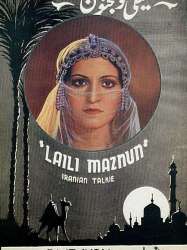
Leyli va Majnoun (1937)
, 2h25Réalisé par Abdolhossein Sepanta
Origine Iran
Genres Drame
Acteurs Abdolhossein Sepanta
Note61%





L’amour idyllique et fervent d’un jeune bédouin arabe nommé Gheys pour Leyli, la fille d’une famille riche d’un tribut arabe. La folle passion de Gheys lui vaut le surnom de Majnoun, qui veut dire « fou » en arabe. Sepanta en fait une histoire d’amour où l’accent est mis sur la pureté et la véracité d’une grande passion inégalée.
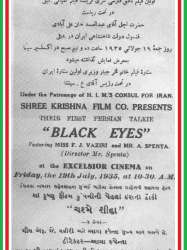
Cheshmhaye siah (1935)
, 1h30Réalisé par Abdolhossein Sepanta
Origine Iran
Acteurs Abdolhossein Sepanta, Shammi
Lors de l’invasion de Nadir Shah en Inde se déroule une idylle amoureuse entre les deux amants, Homayoun et Homa, qui vivent à Lahore.

چشم های سیاه (1935)
, 1h30Réalisé par Abdolhossein Sepanta
Origine Iran
Acteurs Abdolhossein Sepanta, Shammi
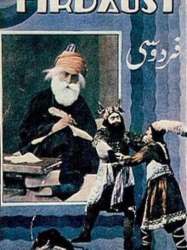
Ferdowsi (1934)
, 1h30Réalisé par Abdolhossein Sepanta
Origine Iran
Genres Drame, Historique
Acteurs Abdolhossein Sepanta, Roohangiz Saminejad
Rôle Ferdowsi
Dans la première scène du film, nous voyons Ferdowsi qui par la fenêtre de sa maison regarde tristement le pont ruiné de la ville de Tus. À la cour du sultan Mahmoud Ghaznavi, Ferdowsi récite certaines parties de Shah Nameh. La vieillesse du poète est la fin de son histoire et se passe dans l’isolement et l’amertume. De temps en temps, il entend par sa fenêtre les enfants chanter ses vers de Shah Nameh. La scène finale est celle de sa mort : deux hommes portent son cercueil, et derrière eux seule la fille du poète les suit, larmes à l’œil.

Shirin et Farhad (1934)
, 1h30Réalisé par Abdolhossein Sepanta
Origine Iran
Acteurs Abdolhossein Sepanta, Roohangiz Saminejad
Note51%





Alors que pour creuser un canal entre le palais et Béhistoun les ingénieurs perçoivent certaines difficultés, et c’est pourquoi les travaux n’avancent pas pour autant, un creuseur des roches de la montagne, Farhad accomplira la tâche pour arriver à sa bien-aimée, Shirin.

شیرین و فرهاد (1934)
, 1h30Réalisé par Abdolhossein Sepanta
Origine Iran
Acteurs Abdolhossein Sepanta, Roohangiz Saminejad
Note51%






Dokhtar Lor (1933)
, 1h30Réalisé par Ardeshir Irani
Origine Iran
Genres Drame, Aventure
Acteurs Roohangiz Saminejad, Abdolhossein Sepanta
Rôle Jafar
Note69%





The movie is about Golnar, a young teahouse girl who was kidnapped as a child and taken to Lorestan with a clan of bandits living among the Lors. The leader of the thieves, Gholi Khan, is beginning to look at her with interest now she is a grown woman. At the teahouse, she meets a young man called Jafar who has been sent to Lorestan by the Iranian government to deal with the problem of banditry in the area. They fall in love, and plan to escape together. Gholi Khan catches on to their plans and beats up Jafar. Jafar rejects Khan's offer to join the bandits, so he is kidnapped and imprisoned. Golnar helps him escape and the couple attempt to flee.
Réalisateur

Leyli va Majnoun (1937)
, 2h25Réalisé par Abdolhossein Sepanta
Origine Iran
Genres Drame
Acteurs Abdolhossein Sepanta
Note61%





L’amour idyllique et fervent d’un jeune bédouin arabe nommé Gheys pour Leyli, la fille d’une famille riche d’un tribut arabe. La folle passion de Gheys lui vaut le surnom de Majnoun, qui veut dire « fou » en arabe. Sepanta en fait une histoire d’amour où l’accent est mis sur la pureté et la véracité d’une grande passion inégalée.

Cheshmhaye siah (1935)
, 1h30Réalisé par Abdolhossein Sepanta
Origine Iran
Acteurs Abdolhossein Sepanta, Shammi
Lors de l’invasion de Nadir Shah en Inde se déroule une idylle amoureuse entre les deux amants, Homayoun et Homa, qui vivent à Lahore.

چشم های سیاه (1935)
, 1h30Réalisé par Abdolhossein Sepanta
Origine Iran
Acteurs Abdolhossein Sepanta, Shammi

Ferdowsi (1934)
, 1h30Réalisé par Abdolhossein Sepanta
Origine Iran
Genres Drame, Historique
Acteurs Abdolhossein Sepanta, Roohangiz Saminejad
Dans la première scène du film, nous voyons Ferdowsi qui par la fenêtre de sa maison regarde tristement le pont ruiné de la ville de Tus. À la cour du sultan Mahmoud Ghaznavi, Ferdowsi récite certaines parties de Shah Nameh. La vieillesse du poète est la fin de son histoire et se passe dans l’isolement et l’amertume. De temps en temps, il entend par sa fenêtre les enfants chanter ses vers de Shah Nameh. La scène finale est celle de sa mort : deux hommes portent son cercueil, et derrière eux seule la fille du poète les suit, larmes à l’œil.

Shirin et Farhad (1934)
, 1h30Réalisé par Abdolhossein Sepanta
Origine Iran
Acteurs Abdolhossein Sepanta, Roohangiz Saminejad
Note51%





Alors que pour creuser un canal entre le palais et Béhistoun les ingénieurs perçoivent certaines difficultés, et c’est pourquoi les travaux n’avancent pas pour autant, un creuseur des roches de la montagne, Farhad accomplira la tâche pour arriver à sa bien-aimée, Shirin.

شیرین و فرهاد (1934)
, 1h30Réalisé par Abdolhossein Sepanta
Origine Iran
Acteurs Abdolhossein Sepanta, Roohangiz Saminejad
Note51%





Scénariste

Leyli va Majnoun (1937)
, 2h25Réalisé par Abdolhossein Sepanta
Origine Iran
Genres Drame
Acteurs Abdolhossein Sepanta
Rôle Ecrivain
Note61%





L’amour idyllique et fervent d’un jeune bédouin arabe nommé Gheys pour Leyli, la fille d’une famille riche d’un tribut arabe. La folle passion de Gheys lui vaut le surnom de Majnoun, qui veut dire « fou » en arabe. Sepanta en fait une histoire d’amour où l’accent est mis sur la pureté et la véracité d’une grande passion inégalée.

Cheshmhaye siah (1935)
, 1h30Réalisé par Abdolhossein Sepanta
Origine Iran
Acteurs Abdolhossein Sepanta, Shammi
Rôle Ecrivain
Lors de l’invasion de Nadir Shah en Inde se déroule une idylle amoureuse entre les deux amants, Homayoun et Homa, qui vivent à Lahore.
 Connexion
Connexion
